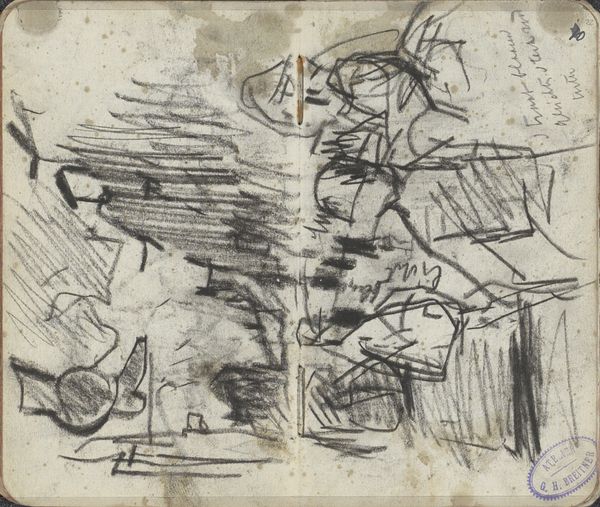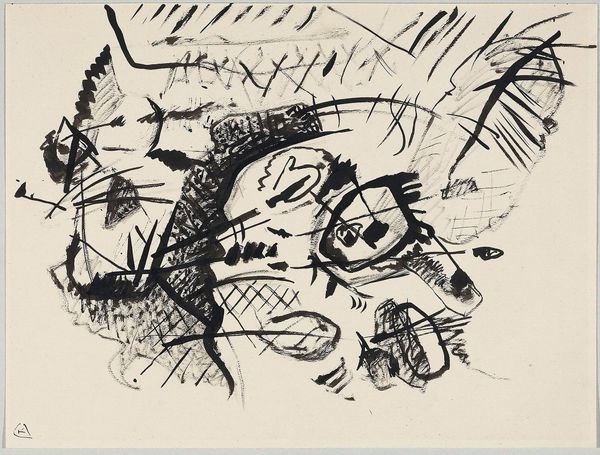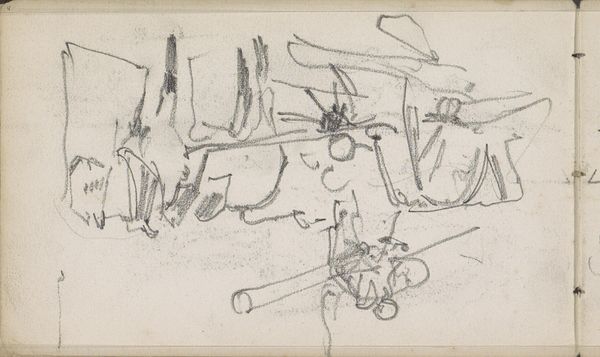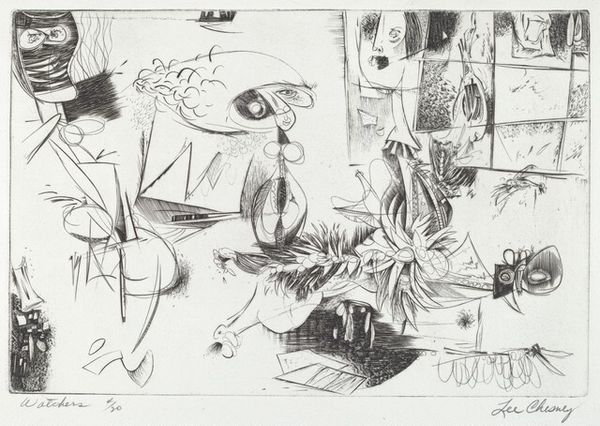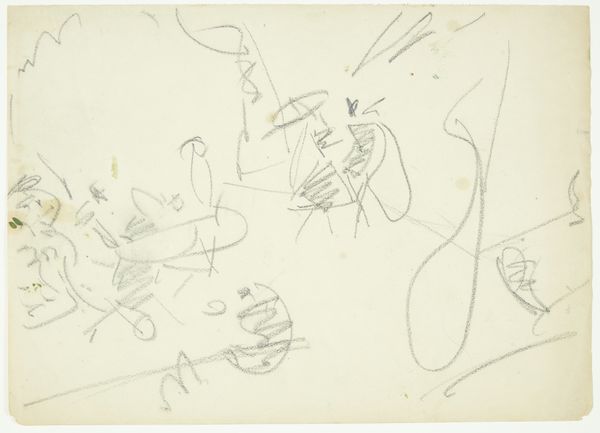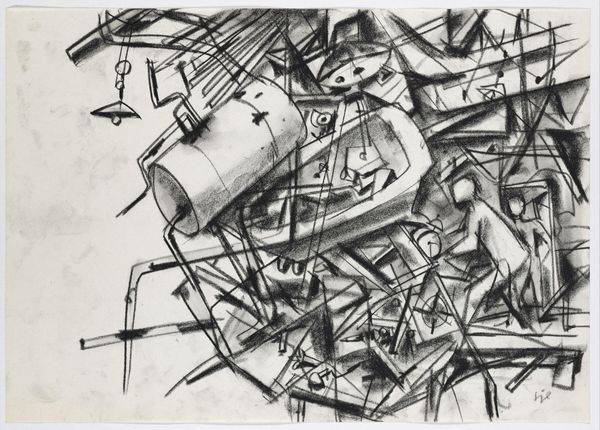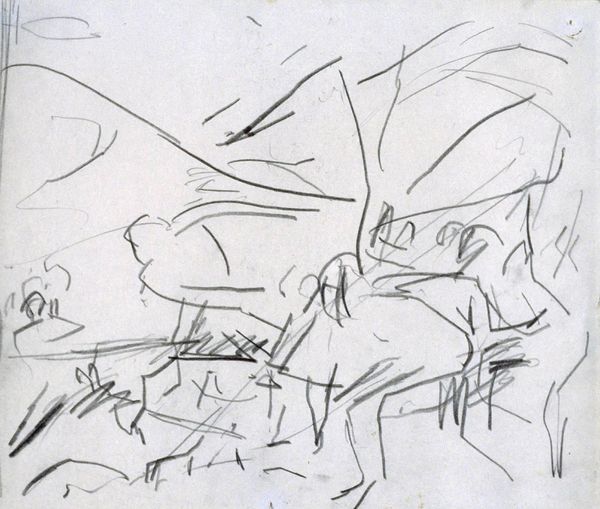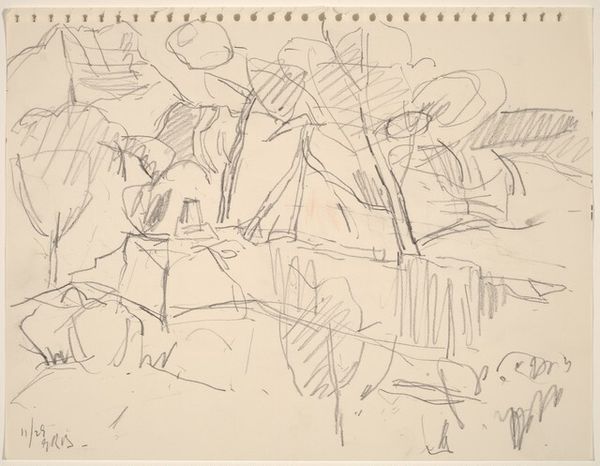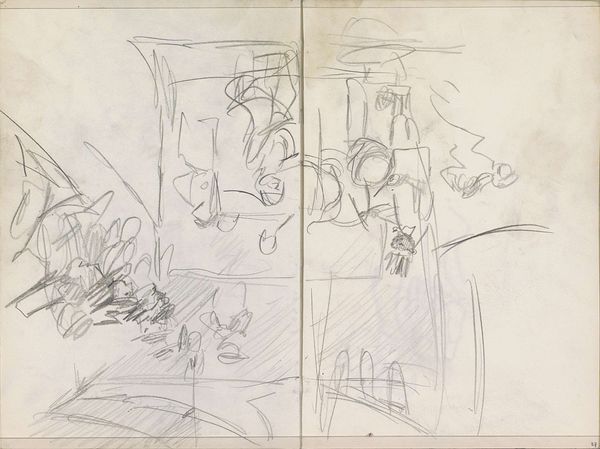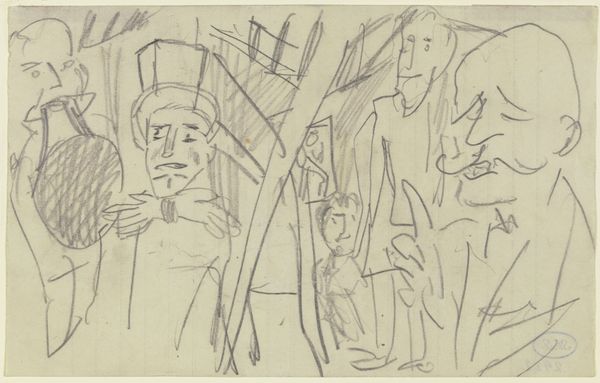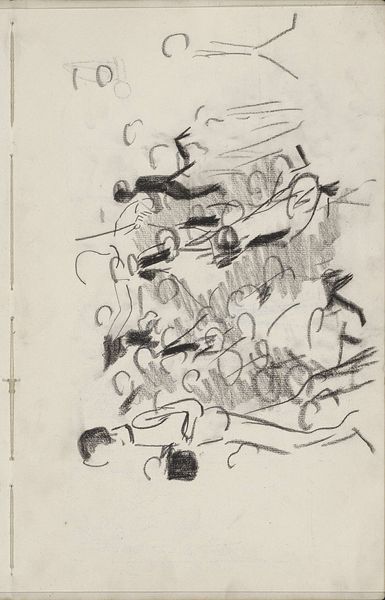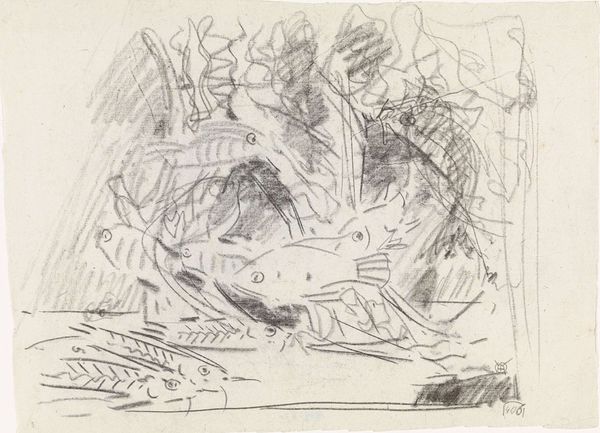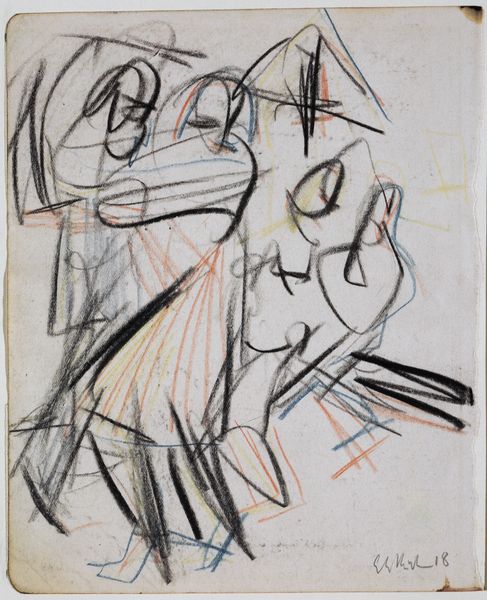
Dimensions: sheet: 21.59 × 27.94 cm (8 1/2 × 11 in.)
Copyright: National Gallery of Art: CC0 1.0
Curator: Looking at this work, there's a restless energy. It's an ink drawing on paper, created in 1932 by Hans Hofmann and is simply called, "Untitled". What do you make of it? Editor: Oh, I love the sheer chaos! It’s like witnessing a thought process exploding onto the page. A beautiful mess of lines, fighting to become something recognizable but ultimately refusing. It feels…alive! Curator: Hofmann was really pushing the boundaries between representation and abstraction. You can see how the materials – the ink, the paper – were instrumental in defining his expressive possibilities. Ink, being immediate, allowed him to think through mark-making. The availability and cost of paper also certainly made it useful to artists, such as Hofmann, interested in iterating many ideas to produce one, monumental idea, eventually. Editor: Yes! And the roughness of the line adds to that immediacy. It's like you're watching his hand move across the paper, unsure, questing. There is a lovely dialogue between chance and deliberation. Were there specific social or political pressures informing this work? Curator: In the 1930s, the rise of totalitarian regimes across Europe drove artists towards abstraction as a form of resistance. And while there's no explicit social critique here, one can see a liberation from traditional academic forms, and an embrace of artistic freedom that stood in contrast to the oppression happening elsewhere. This work can be viewed through a lens of production during The Great Depression; because artists were dealing with more economical and material-related precarity, many switched to inexpensive paper and ink as a result. Editor: That resonates! I almost feel a certain dark humor in the face of such a precarious reality, which could also explain the “explosion” on the page. And it’s all balanced by the deliberate precision that holds back total abstraction! This one image does indeed tell of resistance—material, ideological, economical! Curator: It does. This "Untitled" embodies not just a stylistic choice, but a cultural response, making us think about not just the how of creation, but also the why. Editor: Absolutely. It feels like Hofmann is challenging us to construct our own meanings from the seemingly random symphony of marks. Curator: And perhaps that's the lasting power of abstraction, that it is fundamentally unfinished. Editor: Precisely! Each viewer contributes their own "finishing" stroke. Beautiful!
Comments
No comments
Be the first to comment and join the conversation on the ultimate creative platform.
